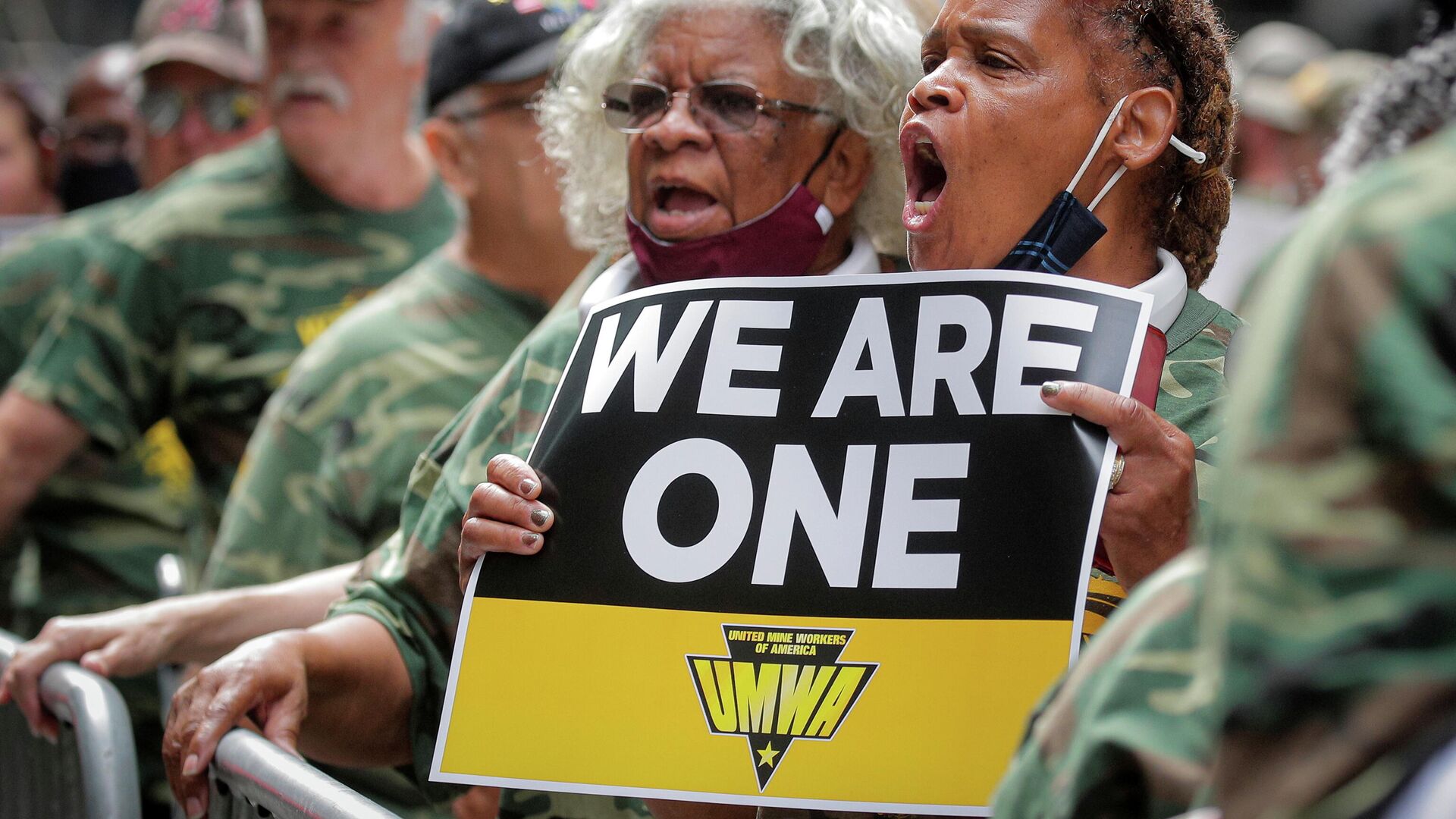Labor Activists Hail ‘Striketober’ as Over 100,000 Union Workers Across US Prepare Work Stoppages
Subscribe
A new wave of strikes is unfolding across the United States as many of the socioeconomic trends of the last 18 months come to a head.
Close to 100,000 workers across several industries in the US are either on strike or preparing to go on strike this month, leading to the coining of a new labor hashtag: #striketober. Many are so-called “essential workers,” whose work was deemed necessary during pandemic lockdowns intended to keep the rest of the population safe from COVID-19. Having faced some of the highest death rates and worsening working conditions, many are now fed up and demanding better working conditions.
"Workers are on strike for a better deal and a better life," said Liz Shuler, president of the AFL-CIO, the nation's biggest labor federation. "The pandemic really did lay bare the inequities of our system and working people are refusing to return to crappy jobs that put their health at risk.”
Some of those on or preparing to strike include:
1,400 workers at Kellogg’s, a company that makes breakfast cereal at several plants across the Midwest, who are striking over a proposed “two-tier” system that would create a class of lower workers with inferior pay and benefits
24,000 nurses and health care workers at health care provider Kaiser Permanente have authorized a strike over a similar two-tier employee structure, which also follows a highly profitable year
More than 10,000 workers at manufacturing plants for tractor maker John Deere, who rejected a contract that gave them minimal raises and denied pensions to new hires, all in the wake of the company’s most profitable year on record
2,500 workers at Mercy Hospital in Buffalo, New York, where nurses have faced rapidly deteriorating working conditions including longer hours, a huge number of patients, and chronic shortages of safety and sanitary equipment they say endanger both themselves and their patients
More than 60,000 television and film production workers in the International Alliance of Theatrical Stage Employees union are likely to revolt against a shaky contract agreed to without rank & file approval that addressed few of their demands, making a strike they’d previously prepared for all the more likely
4,700 transit workers at the Southeastern Pennsylvania Transportation Authority (SEPTA), who have authorized a strike beginning on November 1 if contract negotiations fail, as they’re increasingly seen as likely to
More than 1,000 coal miners at Alabama’s Warrior Met Coal have been on strike since April, seeking a new contract that would reverse the rapid deterioration in working conditions seen since new ownership took over in 2016
Several other powerful strikes have concluded in recent days, including a monthslong effort by workers at Nabisco and a nationwide work stoppage of the weekend by Instacart workers, who are not unionized.
Many of the strikes have seen violence as well, including numerous instances of strikers being hit by vehicles owned by management or buses carrying scabs, or workers willing to take the jobs of the striking workers. At the John Deere plant, injuries also resulted from attempts to replace striking assembly line workers with employees from other sectors untrained on such skilled work.
John Deere is trying to break a strike by having salaried office workers operate heavy machinery, let’s see how that’s going— pic.twitter.com/Yb1JkoFAH8
— Ken Klippenstein (@kenklippenstein) October 15, 2021
"We've definitely seen an uptick in late September and October," said Johnnie Kallas, a Ph.D. student at Cornell University's School of Industrial and Labor Relations (ILR) who tracks labor actions across the US, as told to NBC.
"It's a combination of two factors: workers have more labor-market leverage with employers needing and struggling to hire, and then a lot of these workers have been on the front line of a global pandemic for the past 19 months and were touted as heroes, which has given them lots of leverage."
Additional leverage could come from persistent worker shortages across many industrial sectors, as well as the associated product shortages resulting from backed up shipping ports and other breakdowns in the supply chain.
Spike in Unionizing as Approval Rises
In addition to strikes, the pandemic has also sparked a wave of labor organizing, from Dollar General stores and Starbucks coffee shops to online shopping giant Amazon, which was found in violation of US labor laws in April after the Retail, Wholesale and Department Store Union objected to efforts by Amazon to affect the results of a unionization vote at its massive shipping facility in Bessmer, Alabama.
While union membership in the US has halved since 1983 to just 11% of workers in 2020, largely thanks to an unceasing wave of industrial closures and flight driven by neoliberal economic policies and labor busting that at times was conducted by the US president, recent polls show that approval of labor unions is its highest in half a century. According to a Gallup poll in August, 68% of Americans approve of unions, with 78% of those between the ages of 18 and 29 approving.
Other trends are driving worker organization as well, including rising poverty and hunger rates during the pandemic and persistent unemployment, all while the Biden administration allows special pandemic relief measures to expire.
The Federal Reserve reported earlier this week that the richest 10% of Americans own 89% of all stocks on the US stock market, and that the richest 1% of the country had gained $6.5 trillion in corporate equities and mutual fund wealth since the pandemic began in March 2020, while the bottom 90% had collectively gained just $1.2 trillion in that time.
"Covid was a wake-up call, because it wasn't just you could get injured on the job, but going to work could kill you," Kate Bronfenbrenner, the director of labor education research at the ILR, told NBC. "Workers are feeling like they're working harder than ever and they put themselves out there during Covid and risked their lives for what?"

